People constantly ask us the same question: ‘What are the best things to do in Smoky Mountain National Park with my family? What are the best places to visit in Smoky Mountain National Park to take my children to see? and What to do in Great Smoky Mountains National Park on a family trip?’ The answers are pretty simple and not that much different than what you would do near home, just in a truly fantastic area.
We have taken those Great Smoky Mountains National Park ‘things-to-do-questions’ and broken them down into 12 things that are always favorites in the park. A couple will depend on the age of your children if you have them with you. Fishing and wildlife photography might be a bit difficult with small ones.
There is something for everyone and for people of every age in the park. That is what makes it one the most visited national parks in America, plus you get the added fun at Gatlinburg and Pigeon Forge as well. Below you will find our 12 top things to do in the Great Smoky Mountains.
Want more ideas to round-out your trip to Smoky Mountain National Park?
A lot of great ideas are in these posts!
- 13 Great Smoky Mountains Free Campsites (Updated 2022)
- 34 Free Tennessee Boondocking – Camping Spots & RV Parking
- OBE Great Smoky Mountains National Park Visitors Guide
- 4 Great Reasons to Visit the Smoky Mountain National Park Visitors Center
- 35 Best Smoky Mountain National Park Campgrounds & RV Parks
- 19 Very Best Smoky Mountain National Park Waterfalls
- 17 Spots for Great Smoky Mountains National Park Photos
- 25 Best Hikes In Smoky Mountain National Park
- Our 9 Favorite Smoky Mountains National Park Cabin Rentals
- 27 Best Great Smoky Mountains National Park Hotels By Entrance
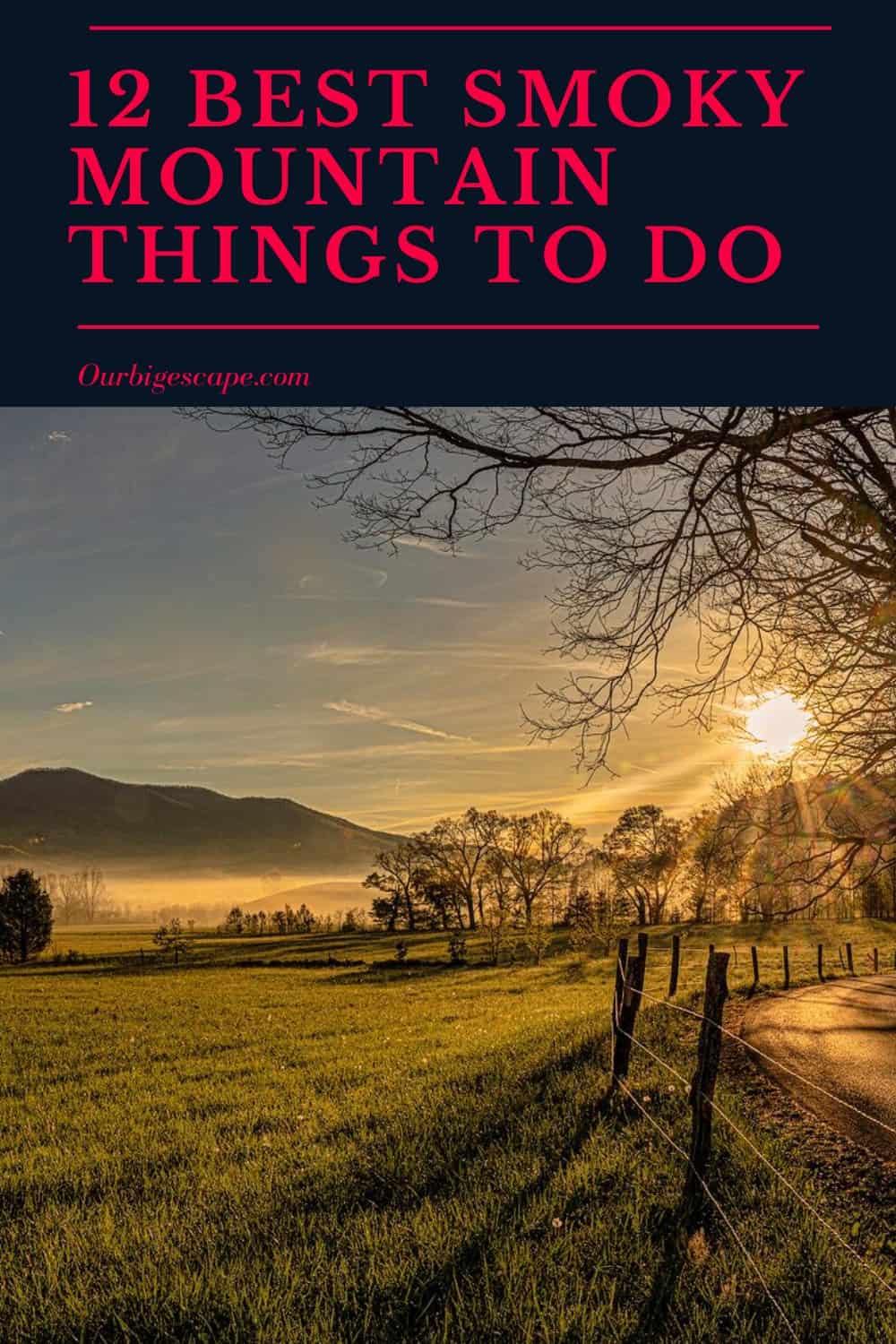
12 Things To Do In Smoky Mountain National Park
check out our video
Enjoy the Wildflowers
Of all the things to do in Smoky Mountain National Park the raw splendor of the Great Smoky Mountains can be embodied in innumerable natural spectacles, from waterfalls at their highest flow to sunset vistas of limitless ranges. The spectacular Spring through Fall wildflower display, one of the best in the world, is without a doubt one of the most cherished manifestations of the soul of this great range.
The annual display is opened by a group of flowers known as Spring Ephemerals. Ephemerals get their name from the fact that they only emerge above ground in the late winter and early spring, blossom, bear fruit, and then quickly wither away after two months. They appear between February and April and disappear (go dormant) around May or June.
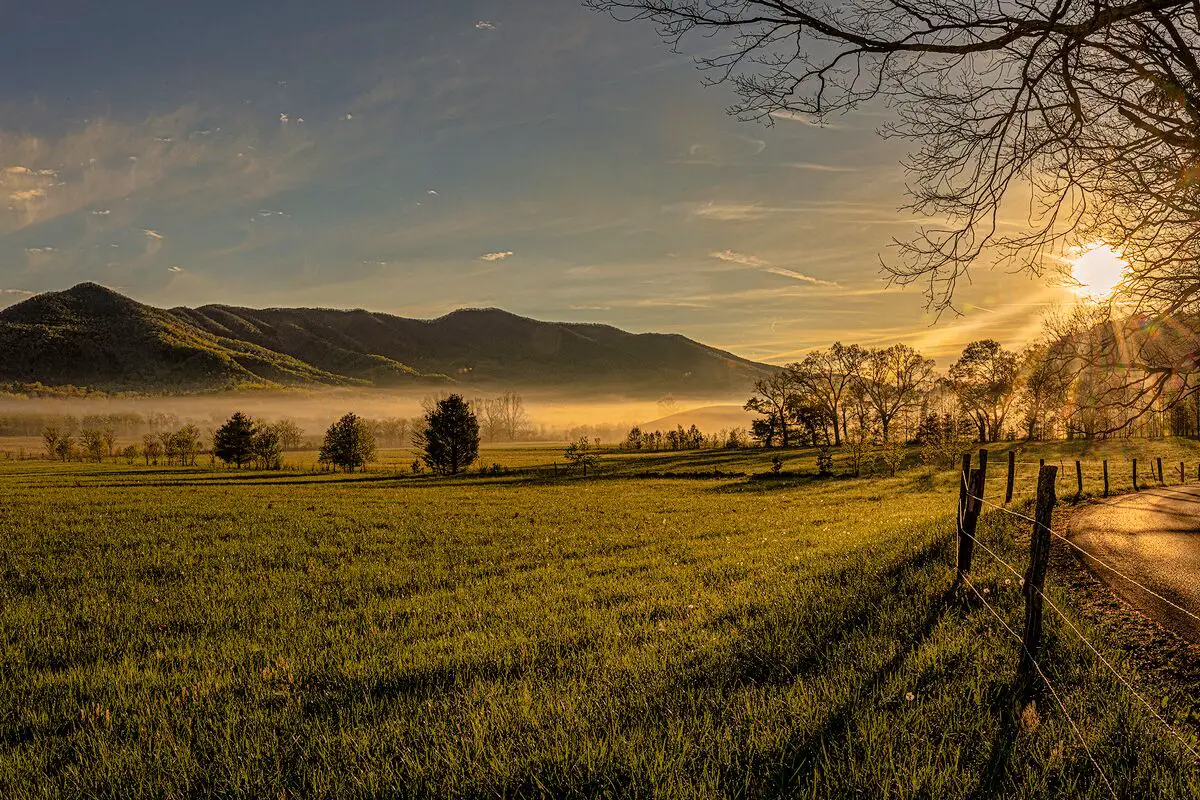 Things To Do In Smoky Mountain National Park (Edited) Photo By Tim Lumley
Things To Do In Smoky Mountain National Park (Edited) Photo By Tim Lumley
When To Visit the Great Smoky Mountains National Park’s Wildflowers
The optimum season for wildflower viewing in the Great Smoky Mountains National Park is from early Spring to early Summer, when the renowned Spring Ephemerals bloom. However, February to September is actually the ideal time to see wildflowers.
Although the ephemerals are beautiful, there is really no poor season to observe wildflowers in the Smoky Mountains since Great Smoky Mountains National Park has more species of flowering plants than any other U.S. national park.
There are several ways to get up close to the stunning blossoms in the Great Smoky Mountains, one of the best spots in the country to see wildflowers. The park’s wildflowers are most noticeable in the Spring, but the humid weather also produces lovely blooms in the Summer and Fall.
The park features 10 different varieties of trillium, as well as violets, lady slipper orchids, showy orchids, crested dwarf iris, fire pink, columbine, bleeding heart, phacelia, jack-in-the-pulpit, and small brown jugs. We extend a warm welcome to you and are here to provide suggestions for the best ways to discover wildflowers and go trekking in the park, one of our top 12 Smoky Mountain National Park things to do.
Good Trails to See & Photograph Spring Wildflowers
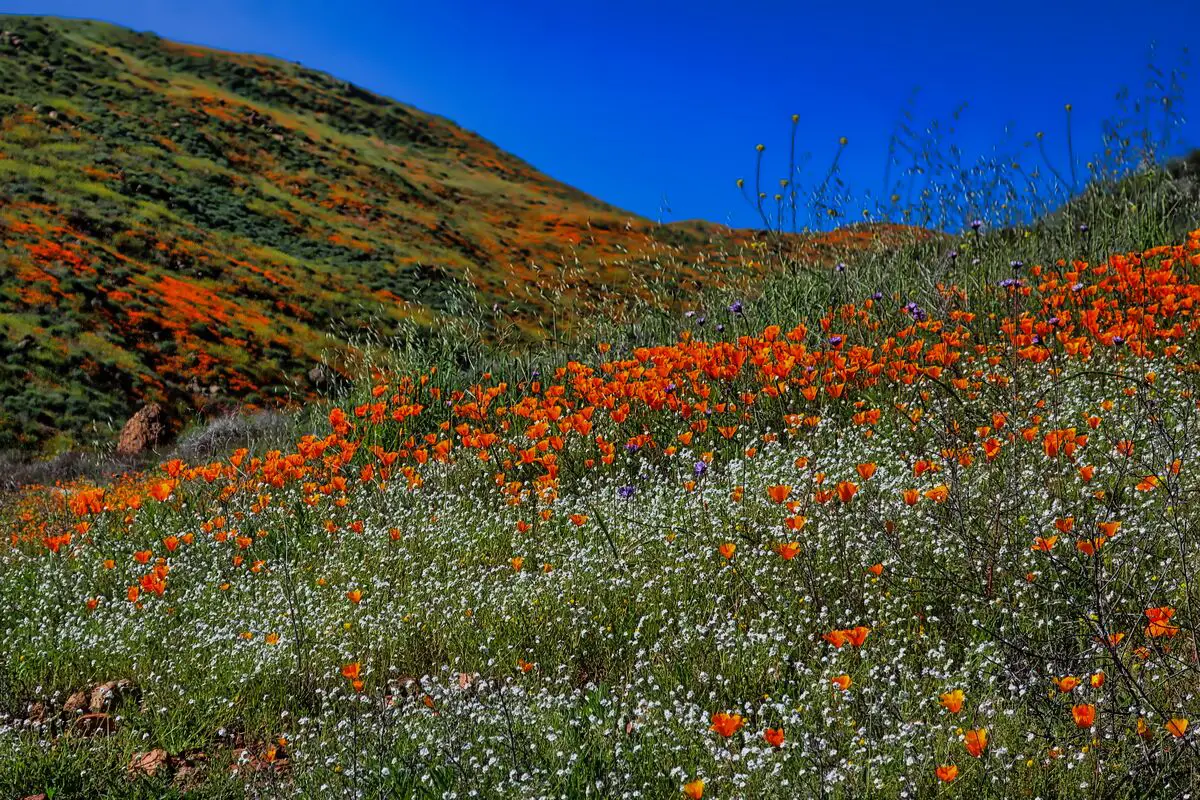 Things To Do In Smoky Mountain National Park – Wildflowers (Edited) Photo By Cultivar413
Things To Do In Smoky Mountain National Park – Wildflowers (Edited) Photo By Cultivar413
We thought we’d introduce you to a few of the spectacular vernal wildflowers you can view during your visit. Spring will soon arrive, and before you realize it, the first blooms will emerge from the Smoky Mountain forest floor.
We’d like to direct you to some of the top trails for viewing the spectacle! Combining a waterfall, fresh flowers and a wonderful hike is a great family things to do in Smoky Mountain National Park park
It’s really difficult to go wrong, because many of the lower and mid-elevation paths in the Great Smoky Mountains will provide a spectacular wildflower display in the Spring, with higher routes coming to life in late Spring and early Summer. However, the following six avenues are highly fruitful at this time of year:
Little River Trail
Kanata Fork Trail
Cove Hardwoods Nature Trail
Porters Creek Trail
Chestnut Top Trail
Lead Cove Trail/Spence Field
With Wildflowers, Its All About Timing
Finding this to be one of the best things to do in the Great Smoky Mountains National Park can be difficult. A visit to the park in April or May should result in some unforgettable strolls through the Great Smokies’ Spring wildflower gardens, while the timing and intensity of the flowers vary from year to year.
Every year in the Spring, the park hosts, one of the great things to do in Smoky Mountain National Park, the Spring Wildflower Pilgrimage, a week-long festival of activities, excursions, and treks that highlights the incredible diversity of life there.
Bright red cardinal flowers, pink turtleheads, Turk’s hat lilies, small purple-fringed orchids, bee-balm, butterfly weed, black-eyed susans, jewel weed, and several other plants are added to preserve the show throughout the summer.
In the late Summer and into the Fall, goldenrod, wide-leaved sunflowers, tall ironweed, mountain gentian, monk’s hood, coneflowers, and several aster species begin to bloom. Purple umbels of sweet joe pye weed can reach heights of ten feet as they mature.
Furthermore, flowers bloom on trees and shrubs all year long. The mountains are covered in a vivid red wash from the red maples’ blossoming period, which lasts from February to April. Ornamental trees including the serviceberry, silverbell, flowering dogwood, redbud, Fraser magnolia, and tuliptree follow shortly after that.
Later in the summer, the sourwood tree, which is treasured for the honey that bees create from its tiny, bell-shaped white blooms, begins to bloom. The year ends with the golden witch-hazel blooms, which bloom from October through January.
In February, the closer-to-the-ground spicebush, as well as sweetshrub, dog-hobble, and blazing azalea, begin to flower. The park is well known for its displays of mountain laurel, rhododendrons, and flame azaleas.
The stunning pink and white blossoms of the mountain laurel emerge from early May to early June. The Catawba rhododendron loves elevations above 3,500 feet and blooms at its peak in June. The Rosebay Rhododendron blooms at lower elevations in June and at mid-elevations in July.
In April and May, flaming azaleas bloom at mid- and low elevations. The bright Gregory Bald exhibition peaks in late June or early July. Typically, the peak on Andrews Bald happens in the early July.
The Smoky Mountain Fall Display of Color
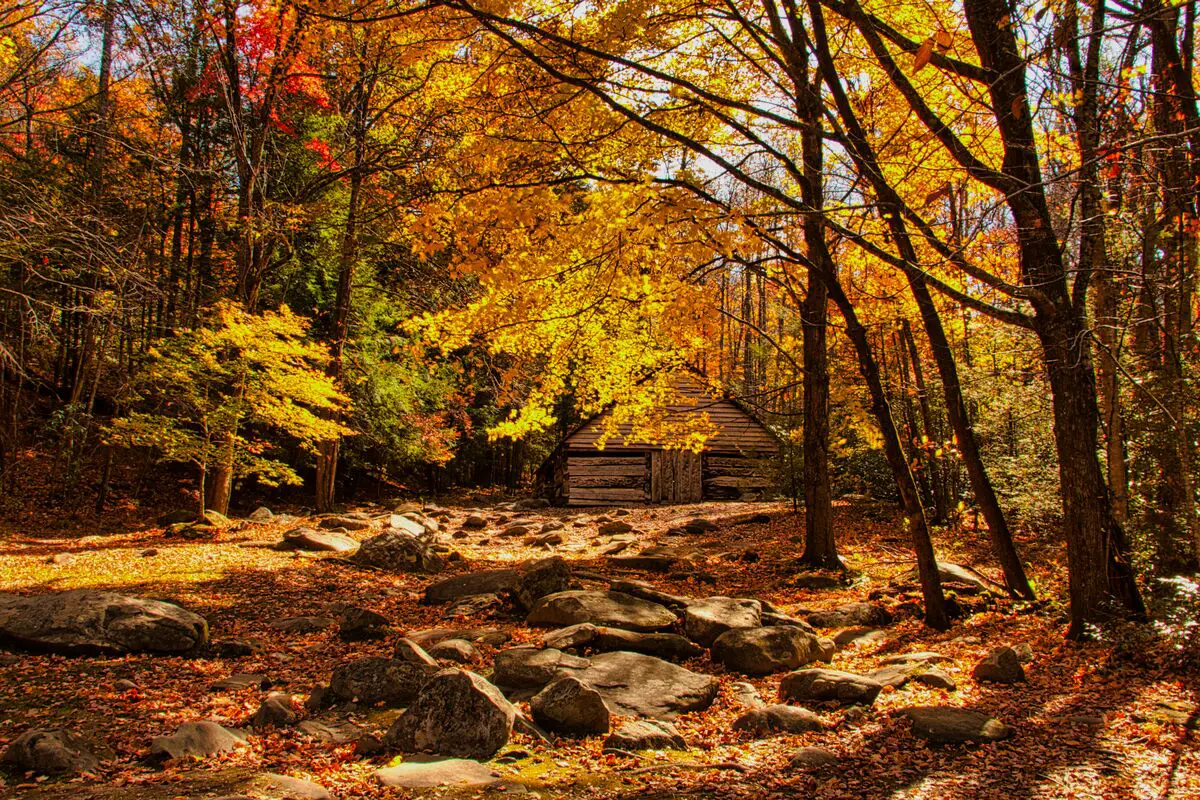 Things To Do In Smoky Mountain National Park – Wildflowers (Edited) Photo By allison_b216
Things To Do In Smoky Mountain National Park – Wildflowers (Edited) Photo By allison_b216
While the wildflowers are beautiful, the Autumn foliage is also one of the best things to do in Smoky Mountain National Park. As the fall foliage descends the mountain sides from high height to low level, the park often sees an autumn leaf season that lasts for many weeks. The precise dates of “peak” season cannot be predicted in advance because the timing of the fall color shift varies on so many different factors.
Elevation has a significant impact on when the park’s fall foliage changes. The turning of the yellow birch, American beech, mountain maple, hobblebush, and pin cherry begins in mid-September at higher elevations, when the temperature is comparable to that of New England.
Fall foliage begins to change colors over 4,000 feet in early to mid-October so this one of the things to do in Smoky Mountain National Park can be a little easier to catch than the wildflowers. Take the Blue Ridge Parkway, the Foothills Parkway, or the Clingmans Dome Road to enjoy them. Monitor one of the many foliage sites which will tell you where to find the best colors every day.
Between mid-October and early November, the Fall color display typically reaches its height at mid and lower elevations. Given the presence of such vibrant trees as sugar maple, scarlet oak, sweetgum, red maple, and hickories, this is the park’s most impressive exhibit and one of the to things to do in Smoky Mountain National Park.
Best Spots For Capturing Fall Foliage In The Smoky Mountains
Cades Cove
One of the most well-liked places to see the Smoky Mountains’ Fall Foliage is in the Great Smoky Mountains National Park’s Cades Cove region. The region is among the last in the national park to start changing into fall because of its lower elevation.
Abrams Falls
Take the trip up to Cades Cove and go for a hike on one of the several trails that originate there, such as the Cades Cove Nature Trail or the trail leading up to Abrams Falls, if you’re up for a good hike. Abrams Falls is definitely worth the hike up to it. No matter which direction you look, the views from this location will take your breath away. It is one of the most well-liked waterfall treks in the Great Smoky Mountains National Park.
Laurel Falls
One of the most well-liked hiking paths in the Smoky Mountains is Laurel Falls, named for the mountain laurel that blooms in this region of the national park. The 2.6-mile, paved route is just a few miles south of the Sugarlands Visitor Center and offers hikers a breathtaking glimpse of a stunning, 80-foot-high waterfall. Laurel Falls offers a wealth of photo options, particularly in the early morning and late afternoon when the mountains cast just the right amount of picturesque shade.
Newfound Gap
For those who want to witness the spectacular natural color display early on, the best route is US Highway 441, which passes through Newfound Gap and connects to Clingmans Dome Road. Along Newfound Gap Road, which is the lowest pass over the Smoky Mountains, you can see some of the first places where fall colors start to appear. At Newfound Gap, the overlook is an excellent spot to pause and take some pictures.
Clingmans Dome
With a height of 6,643 feet, Clingmans Dome is the Smokies’ highest point. To access the parking lot at Clingmans Dome, travel up to Newfound Gap and then follow Clingmans Dome Road. For a 360-degree view of the stunning fall foliage, hike the half-mile up to the observation tower.
Chimney Tops Trail
Just a few miles before to the Newfound Gap overlook, on Newfound Gap Road, one can access the Chimney Tops Trail. Despite being difficult, the trek is worthwhile because of the breathtaking view from the top. Despite being only 2 miles long, the trail climbs 1,400 feet in that time, culminating in a rock scramble at the peak.
Roaring Fork Motor Nature Trail
Roaring Fork Motor Nature Trail is an excellent choice if you’re searching for a colorful vista without having to hike. It is a one-way, 5.5-mile loop road that travels through the woods and offers opportunity to pause at a number of hiking trails and historic structures. The park also has a number of viewpoints where you may stop without getting out of your car and enjoy the fall foliage. By entering the national park via the Historic Nature Trail Drive, one can reach the trail.
Rainbow Falls
In addition to being accessible via Historic Nature Trail Drive, Rainbow Falls is situated close to the Roaring Fork Motor Nature Trail. Another well-liked and moderately challenging trail that follows Le Conte Creek and includes multiple footbridges before providing hikers with their first look of the falls is the Rainbow Falls Trail. The rainbows that can be seen in the mist generated by the afternoon sun are how the falls got their name. Rainbow Falls, which is 80 feet high, is a magnificent sight to view all year long.
Therefore, Great Smoky Mountains National Park is the greatest area to view and enjoy the fall season at its peak, whether you like to take the family for a beautiful drive or choose to get off along the way and explore some of the hiking trails. Don’t pass up the opportunity to experience the Smoky Mountains’ stunning fall foliage. Plan your family’s trip to Pigeon Forge right away!
5 Great Picnicking Locations
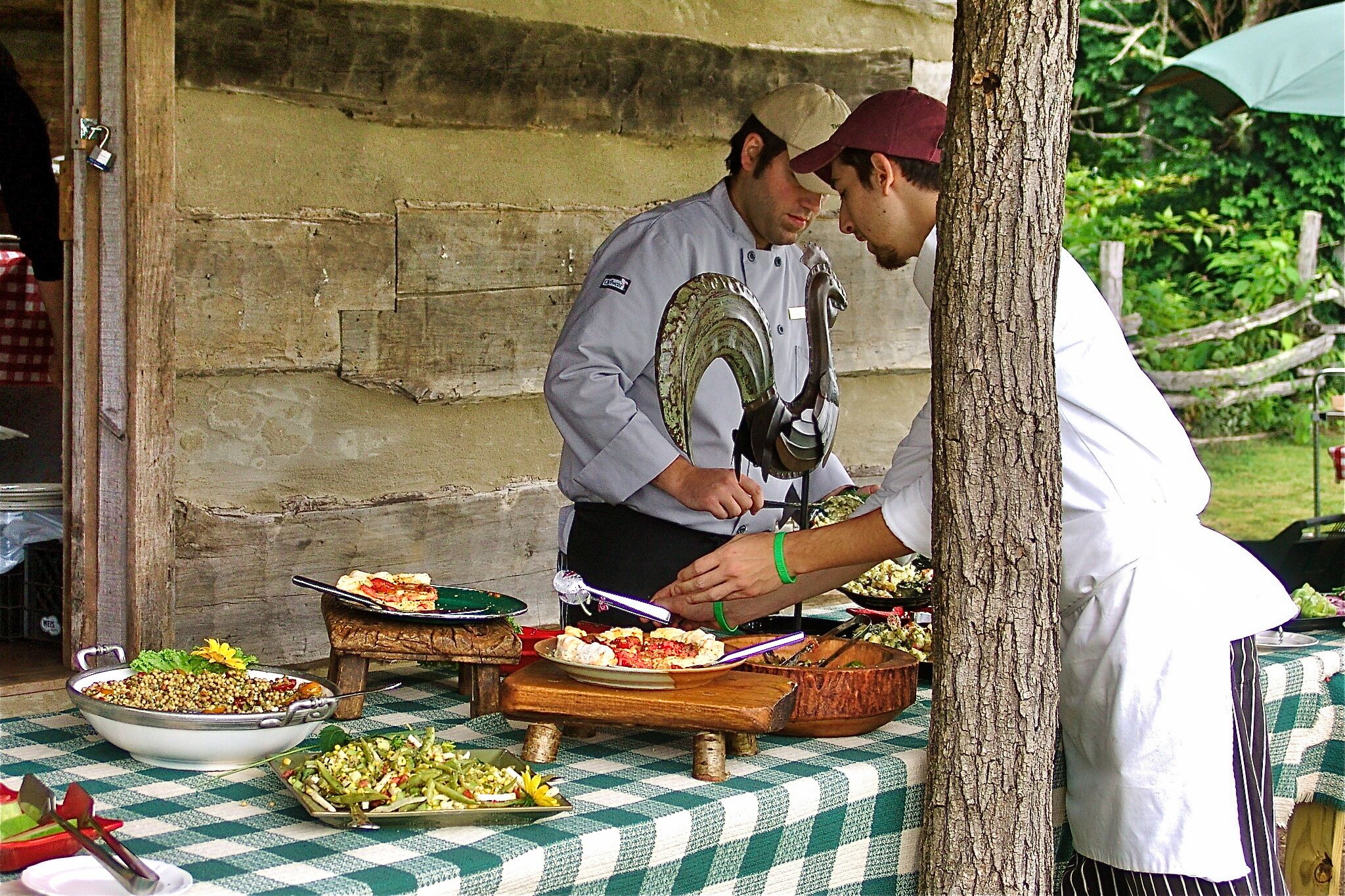 Things To Do In Smoky Mountain National Park – (Edited) Photo By Susie Blackmon
Things To Do In Smoky Mountain National Park – (Edited) Photo By Susie Blackmon
What type of activity can be more fun than a family Picnic. There are of course unlimited places to have a family meal in the park and we have listed some of our favorites below. These family areas are some of the best Smoky Mountain National Park park attractions.
Chimney Tops Picnic Area
Our favorite lunch location in the entire Great Smoky Mountains National Park is the Chimney Tops picnic area, which is available from March 11 to November 26 and offers 68 picnic sites. The several tables facing the river at this well-known picnic area are stunning and difficult to find.
After you’ve finished eating, think about ascending the strenuous Chimney Tops Trail for a fantastic exercise and breathtaking mountain views. About 20 minutes from the center of Gatlinburg, the Chimney Tops region is situated in the National Park.
Greenbrier Picnic Area
There are 12 picnic sites at the year-round Greenbrier picnic area. After the lunch is over, take a short stroll down the Porter’s Creek Trail. Beautiful vistas of a clean river and some of the best wildflower viewing in the entire National Park can be found on this short, kid-friendly hike (seasonal).
The Greenbrier region is situated in the National Park’s Greenbrier portion, fifteen minutes east of the center of Gatlinburg.
Cades Cove Picnic Area
There are 81 picnic tables at the year-round open Cades Cove picnic facility. One of the most popular attractions in the entire Great Smoky Mountains National Park is the Cades Cove Scenic Loop, which you absolutely must do while on vacation. On Laurel Creek Road, close to the Scenic Loop entrance, is the Cades Cove picnic spot, which is close to the Cades Cove campground.
All of the tables have a charcoal barbecue next to them, and many of them are situated right next to a lovely creek.
Picnic Area at Metcalf Bottoms
There are 122 picnic areas at the Metcalf Bottoms picnic park, which is open all year long. This picnic area has level picnic sites and a grill at each one. It is the second-largest picnic area in the entire National Park. Consider taking a quick trek on the Metcalf Bottoms Trail after you complete your meal.
Old homesites, footbridges, a historic cemetery, and a schoolhouse from the 1930s may all be seen on this short, 1.2-mile roundtrip journey.
Herbert Holt Park Picnic Area
There are many picnic tables and grills next to the sites at Herbert Holt Park, which is open all year. It’s hard to beat this location for families with young kids! The kids will enjoy using the playground and jungle gym while Mom and Dad start the BBQ grill.
On-site amenities include a trout stream, a trout fishing stream, public facilities, and even a fishery. There is plenty of free parking available at the park, which is immediately before Traffic Light #1 in Gatlinburg (if approaching from Pigeon Forge).
Wildlife Photography
Viewing wildlife in the Smokies can be challenging things to do in Smoky Mountains National Park because most of the park is covered by dense forest. Open areas like Cataloochee and Cades Cove offer some of the best opportunities to see white-tailed deer, elk, black bear, raccoon, turkeys, woodchucks, and other animals.
The narrow, winding road of Roaring Fork Motor Nature Trail encourages motorists to travel at a leisurely pace and sometimes yields sightings of bear and other wildlife. During winter wildlife is more visible because deciduous trees have lost their leaves.
Where Can I See Wildlife in Great Smoky Mountains National Park?
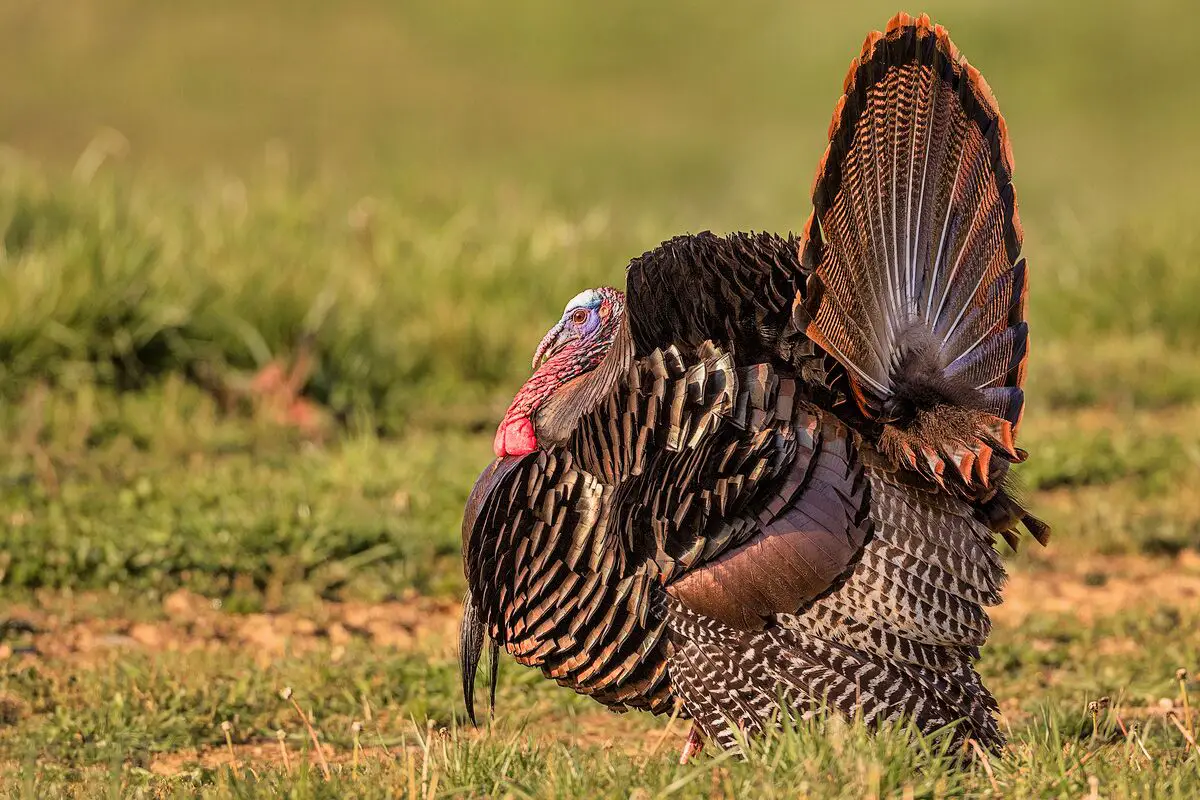
Great Smoky Mountains National Park is a spectacular place to go wildlife watching. There are 65 types of mammals in Great Smoky Mountains National Park, but it’s hard see all of them on your visit. The park’s dense forests that are home to more tree species than all of northern Europe, can make it difficult to spot animals. Commonly spotted animals along the roadside at night include bears, elk and deer.
Black Bears
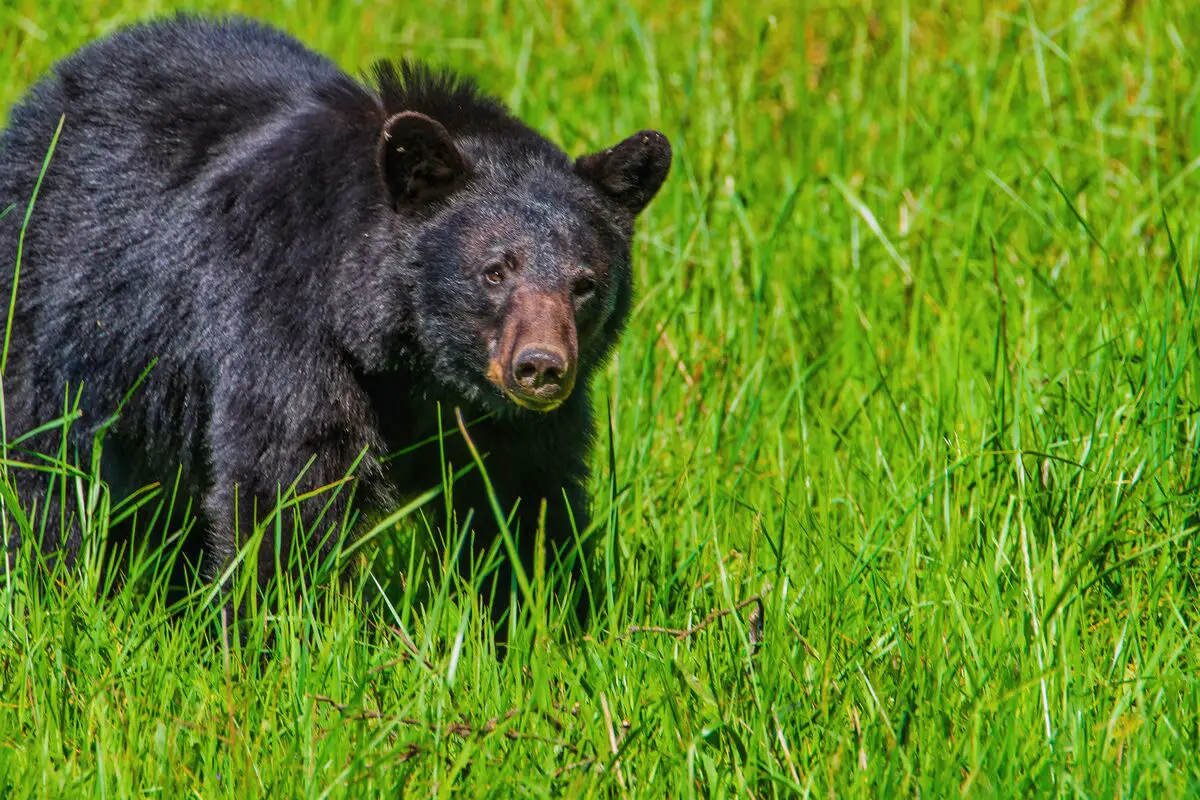 Things To Do In Smoky Mountain National Park – Wildlife (Edited) Photo By Jim Liestman
Things To Do In Smoky Mountain National Park – Wildlife (Edited) Photo By Jim Liestman
Because there are just under 2,000 bears living in Great Smoky Mountains National Park, the likelihood you will see a bear in the park is very high which are on many people things to do at Smoky Mountain National Park bucket list. Cades Cove, on the park’s western border, and Cataloochee Valley, on its eastern border, are the two greatest locations to see bears.
Early in the morning and around twilight, particularly in the spring and summer, are the greatest times to spot bears. Bears are present throughout the park, so keep in mind that by federal regulation, all visitors must store their food in the trunk of their vehicles and discard all trash and food scraps in bear-proof trash cans and dumpsters.
The likelihood of seeing a bear in the Great Smoky Mountains National Park is very high because there are just about 2,000 of them there, making it one of the top things to do in Smoky Mountain National Park.
Cades Cove, on the park’s western border, and Cataloochee Valley, on its eastern border, are the two greatest locations to see bears. Early in the morning and around twilight, particularly in the spring and summer, are the greatest times to spot bears.
However, keep in mind that bears are present throughout the park, and according to federal law, all visitors must properly store their food in the trunk of their cars and dispose of all trash and food scraps in dumpsters and trash cans that are bear-proof.
Best Place to Photograph Black Bears
Cades Cove
One of the best spots in the Smoky Mountains to observe black bears is Cades Cove. This area of the park has an 11-mile circle that is ideal for observing animals and is accessible by car or bicycle and is ideal for this favored things to do in Smoky Mountains National Park. Many bears take pleasure in the space that Cades Cove offers with its beautiful mountain backdrop and open valleys.
Black bear mothers and their cubs are occasionally seen strolling alongside the route. Keep a safe distance between you and these bears at all times if you want to capture pictures of them.
Roaring Fork Motor Nature Trail
Outside of Gatlinburg, there is a lesser-known scenic route called Roaring Fork that offers all the stunning Smoky Mountain views without the traffic and soon becomes everyone’s things to do in Smoky Mountains National Park. Even though this 5.5-mile trip is near the bustle of Gatlinburg, black bear sightings there are nonetheless common.
There are several trails and historical places along this trip, so you may get out of your car and explore if you choose. This is another fantastic feature of the drive. Bears may be spotted on these paths, so be mindful of the wildlife and its habitat.
Bobcats
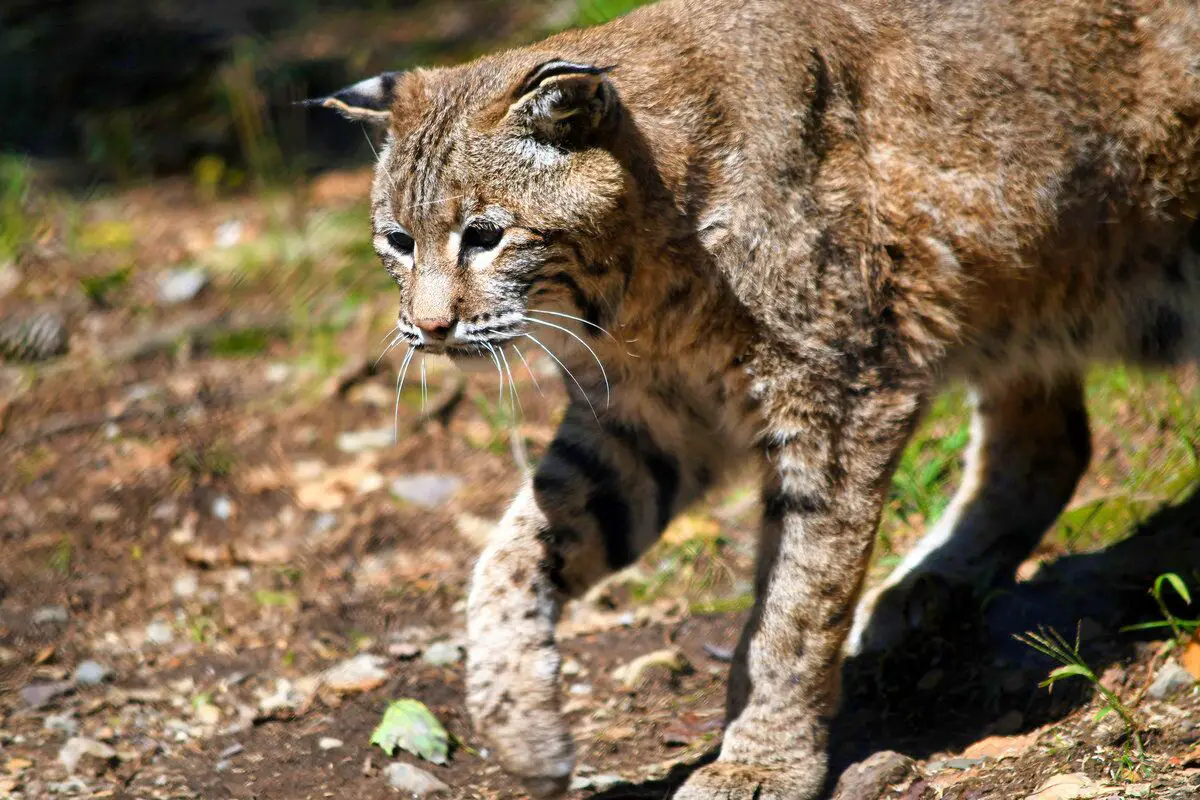 Things To Do In Smoky Mountain National Park – Wildlife (Edited) Photo By Pontla
Things To Do In Smoky Mountain National Park – Wildlife (Edited) Photo By Pontla
Bobcats are a solitary species, and according to park officials, they are the only felines that reside there. Bobcats, which are bigger than house cats, might have brown, beige, or black markings. Although they can also consume birds and rodents, they typically devour rabbits and hares. Consider yourself lucky if you see one because they are nocturnal, lone, and secluded.
Elk Viewing and Photos
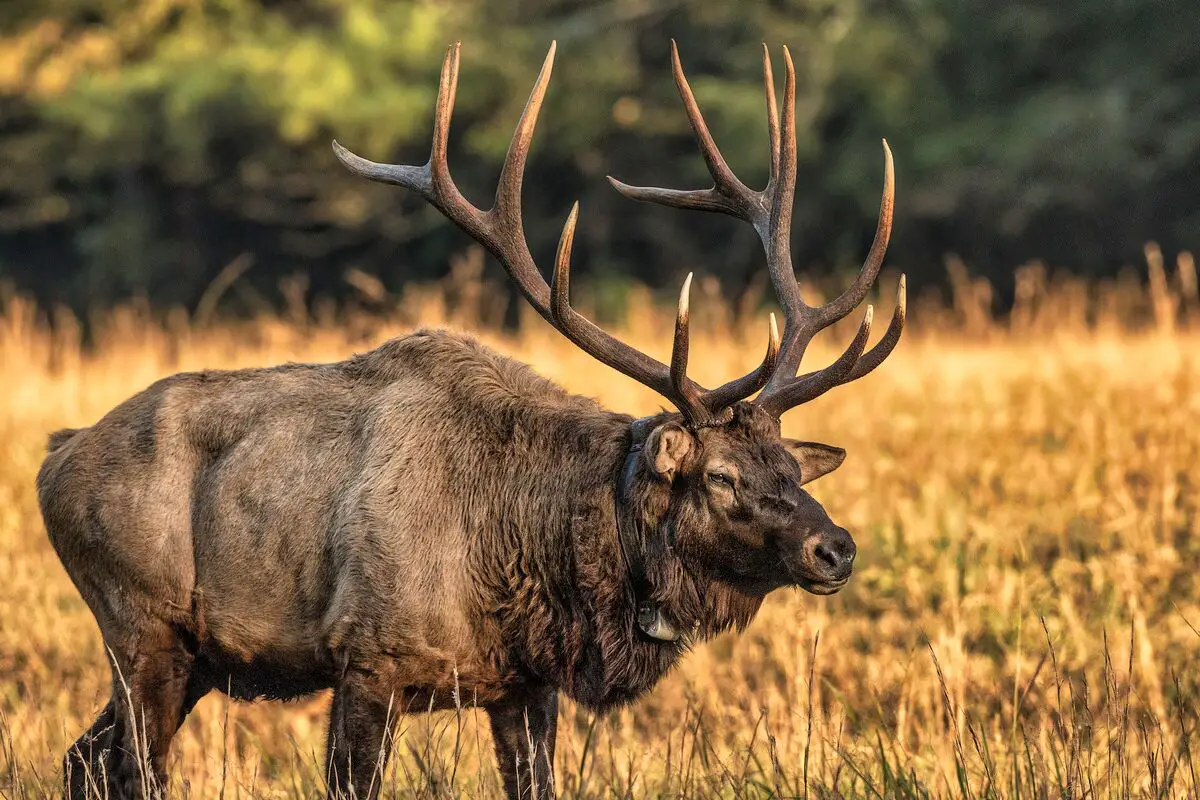 Things To Do In Smoky Mountain National Park – Wildlife (Edited) Photo By Tim Lumley
Things To Do In Smoky Mountain National Park – Wildlife (Edited) Photo By Tim Lumley
Elk, a creature typically connected to the American West, can be found in the Great Smoky Mountains National Park, despite the fact that this may sound surprising. They don’t just happen to live in the park. 25 elk were reintroduced to the park in 2001 by park officials. 27 more were reintroduced the following year.
In North Carolina, it had been 200 years since the last elk sighting, and Tennessee, it had been roughly 150. Elk can weigh up to 700 pounds and are not deer. Visitors need to keep at least 25 yards between themselves and elk since they can be hazardous, especially if female elk are giving birth to young elk.
Early in the morning, late at night, especially on cloudy days, elk are most active. Go to Cataloochee in the park’s southeast if you want to view elk there.
Best Locations for Elk
The Cataloochee Valley and the vicinity of Cherokee along the Oconaluftee River are where you can find the majority of elk. The 11-mile gravel road with multiple hairpin twists known as Cove Creek Road provides the most straightforward approach to Cataloochee. Once you drive onto Cove Creek Road, it will take you around 45 minutes to get to the valley.
A mile-long valley that runs from east to west is encircled by some of the Eastern United States’ most untamed mountains. One of the easiest areas to see these elk is in the fields surrounding the Oconaluftee Visitor Center, spanning along the Oconaluftee River to the Oconaluftee Job Corp Center. The other primary herd is situated close to Cherokee, NC.
Top take part in another favored things to do in Smoky Mountains National Park get some photos of the Elk. Elk are most photogenic during the rut, which begins in the middle of September and lasts for roughly a month. Prepare to reach Cataloochee an hour or so before daybreak. The sound of the bulls bugling and a heavy blanket of fog will frequently fill the valley.
The light may be stunning when the sun rises over the mountains, providing some fantastic opportunity for habitat pictures or light filtering through the trees. The animals usually move into the forest to go to sleep in order to avoid the heat of the day after the sun rises above the mountains and the fog clears.
The valley can be strangely peaceful during the day, but as soon as the sun begins to set, the noises of bugling bulls once more betray their presence, followed by the return of cows and calves.
White-tailed Deer
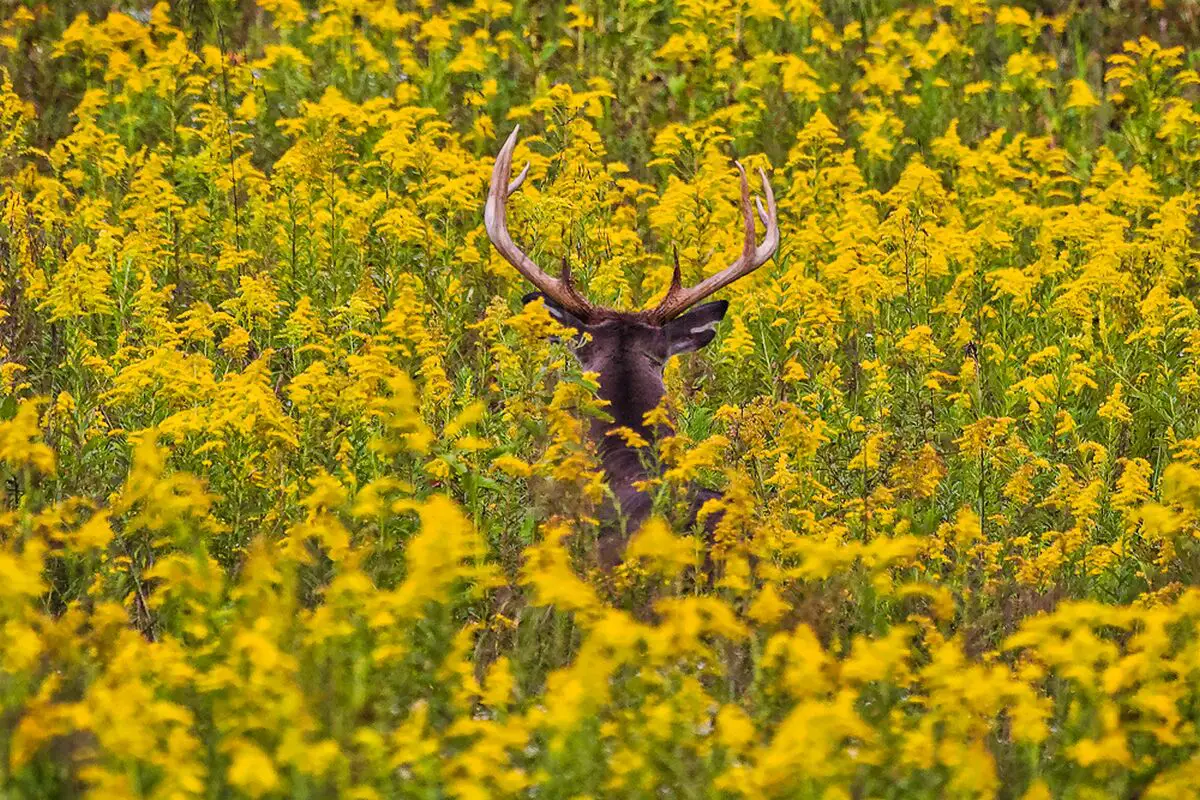 Things To Do In Smoky Mountain National Park – Wildlife (Edited) Photo By Matthew Paulson
Things To Do In Smoky Mountain National Park – Wildlife (Edited) Photo By Matthew Paulson
White-tailed deer, a frequent sight in the park, are much smaller than elk and are more likely to be seen in open regions like Cades Cove and Cataloochee. They are, in fact, the smallest deer in the deer family of North America.
Best Time for Deer Photos
The most heavily photographed subject during this time in the Smoky Mountains is the Whitetail Deer. Early to mid-December is when the whitetail deer has attained peak physical conditions. Bucks have swollen necks and darkened antlers while doe’s are plump and sleek due to summer’s feeding. This is also a very active time for the whitetail deer as the breeding season is typically in full swing.
Bucks are very active and chasing does at all times of the day, giving a high likelihood of not only locating a trophy animal, but successfully photographing it as well can be one of the great things to do in Smoky Mountains National Park. Photography later in the season can also be successful as bucks are looking to regain the energy and fat stores they had depleted during the breeding season.
Cycling
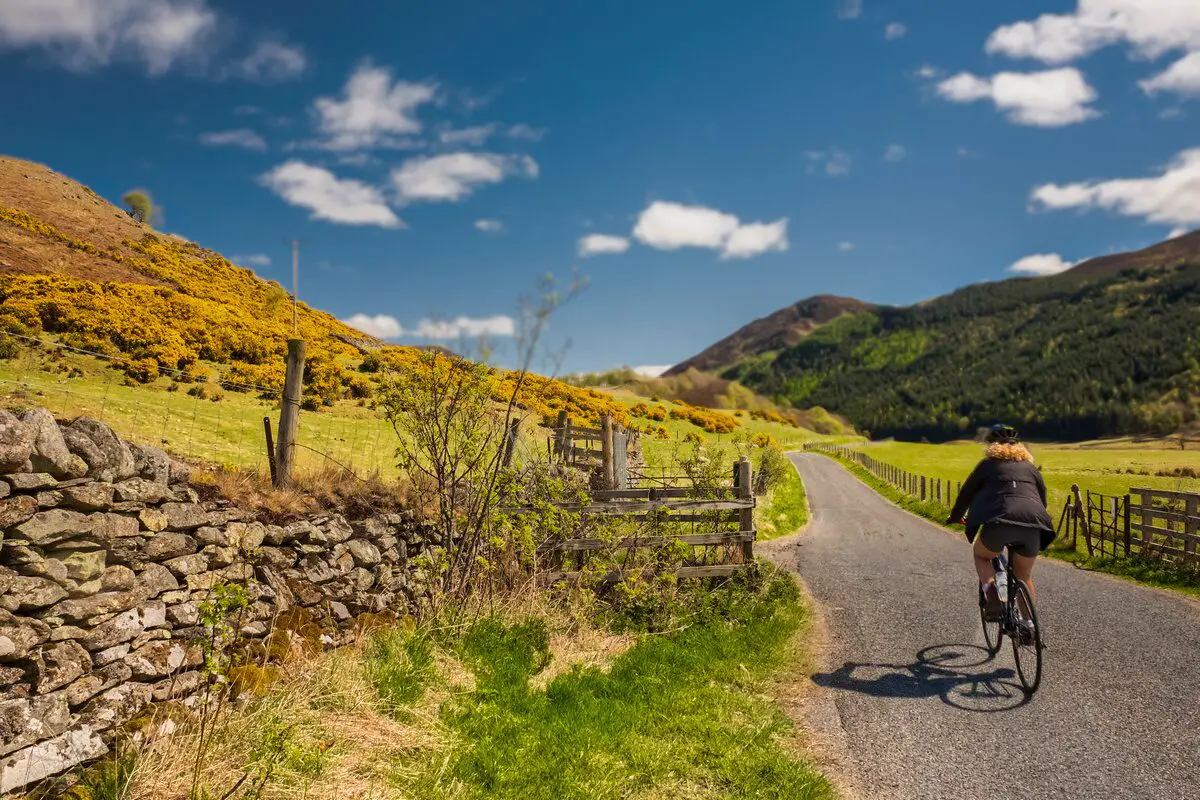 Things To Do In Smoky Mountain National Park – Cycling (Edited) Photo By John Loach
Things To Do In Smoky Mountain National Park – Cycling (Edited) Photo By John Loach
One of the favorite things to do in Smoky Mountains National Park is cycling. Bicycles can travel on most roads within the park. However, due to steep terrain, narrow road surfaces, and heavy automobile traffic, many park roads are not well suited for safe and enjoyable bicycle riding.
Top 3 Smoky Mountains National Park Biking Trails with the Best Views.
Gatlinburg Trail across Gatlinburg River
You’ll like riding a bike down the Gatlinburg Course if you’re looking for a lot shorter trail that is more leisurely and takes less time to complete. There are only 1.9 miles on this one-way track. Just outside of downtown Gatlinburg, it is close to the Sugarlands Visitor Center.
You can see older foundations and chimneys from past settlements in the area as you bike along this trail, which runs alongside the Little Pigeon River. The riding route in the Smoky Mountains National Park is a fantastic location to view some of the fascinating history the region has to offer. The Gatlinburg Trail is accessible to walkers, joggers, and pets but is off-limits to cars.
In fact, it’s one of only 2 pet friendly trails in the national park!
Oconaluftee River Trail
Oconaluftee River Trail View, Similar to the Gatlinburg Trail, the Oconaluftee River Trail only allows pedestrians, joggers, and pets to use it. The Oconaluftee River, from which the trail takes its name, is the main site to witness while hiking this walk. While biking on the trail, you will have numerous opportunity to admire the beauty of the river.
It is 1.5 miles long, one way, and generally level for simple transportation from the Oconaluftee Visitor Center. You may also get the opportunity to witness some of the stunning fauna that the Oconaluftee forest has concealed from view when riding along this path. Families with young children and anyone looking to take a leisurely stroll through the park should take this route.
This is the only other pet-friendly biking trail in the Smoky Mountains National Park, the other being the Gatlinburg trail.
Cades Cove Loop
The most well-liked riding route this side of the Smoky Mountains is Cades Cove Loop. Because of the high terrain, automobile traffic, and other dangers, there are no official bicycle trails within the park, which you might not know if you are unfamiliar with the area. Cades Cove Loop is the lone exception, though.
The park closes the loop to car traffic on Wednesdays and Saturday mornings from May through September, when the area sees the most tourists, so bikers and people walking can experience Cades Cove up close. The 11-mile loop is a one-way road with many of historical, natural, and wildlife attractions.
You can view some of the earliest significant communities in the region while biking the Cades Cove Loop, you’ll get the chance for another top things to do in Smoky Mountains National Park a close-up look at some local wildlife like white-tailed deer. Despite being one of the most well-known attractions in the region, the 11-mile loop can be challenging and takes 2-4 hours to complete on a bicycle.
Roads in Tennessee’s Greenbrier and Tremont regions, as well as North Carolina’s Cataloochee Valley and Lakeview Drive, are other places that are appropriate for bicycles. To find these places, download a map of the park.
In Great Smoky Mountains National Park, there are no mountain bike trails. The only park trails that permit bicycles are the Gatlinburg Trail, the Oconaluftee River Trail, and the lower Deep Creek Trail. On all other park routes, bicycles are not permitted.
Mountain biking trails are open on national forest and recreation lands outside Great Smoky Mountains National Park. For information on things to do in Smoky Mountains National Park please contact the following offices about biking trails:
Chattahoochee National Forest (770) 297-3000
Cherokee National Forest (423) 476-9700
Nantahala National Forest (828) 257-4200
Pisgah National Forest (828) 257-4200
Big South Fork National River & Recreation Area (423) 286-7275
Mount Rogers National Recreation Area (800) 628-7207
Number 5 Of Our Things To Do In Smoky Mountains National Park Is Fishing
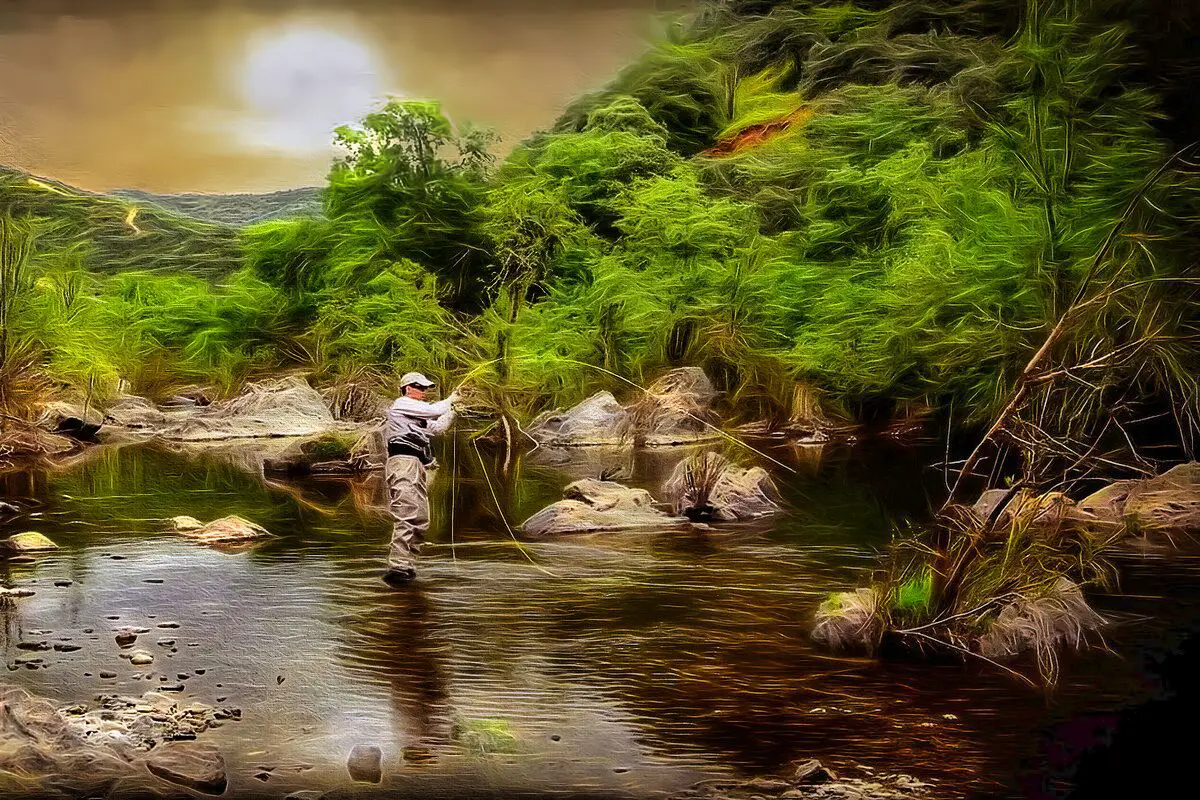 Things To Do In Smoky Mountain National Park – Fishing (Edited) Photo By Jobeca
Things To Do In Smoky Mountain National Park – Fishing (Edited) Photo By Jobeca
One of the last remaining wild trout ecosystems in the eastern United States is protected by the 2,900 miles of streams that make up the Great Smoky Mountains National Park. There are enough trout in the park’s streams in about 20% of the cases.
The park offers a wide range of fishing opportunities, including streams with big and smallmouth bass as well as distant, chilly headwater trout streams. The majority of streams have fish populations that are at or close to their carrying capacity and provide excellent opportunities to catch these species all year long.
In the park, fishing is allowed every day between 30 minutes before sunrise and 30 minutes after sunset. Fishing is permitted in all streams in the park.
Fishing in Great Smoky Mountains National Park
Fishing is the number one of all family things to do in Smoky Mountains National Park. The rivers and streams found throughout the park are home to a plethora of wild fish. Only roughly 600 to 800 miles of the 2,110 kilometers of streams that are open for fishing year-round have fish.
Rainbow Trout
Approximately 3,000 feet below sea level, Rainbow and Brook Trout coexist. But they do not get along well together.
The brook trout population was nearly wiped out when rainbow trout were introduced. The less aggressive Brook Trout is under a lot of strain from the more prolific and swiftly maturing Rainbow Trout.
The absence of food is the biggest barrier to park fish growing to be large, mature fish. Although some fish do, the natural food supply is insufficient for them to live more than four years.
Brook Trout
The Smoky Mountains are home to only one native species of fish, and you must ascend to altitudes greater than 3,000 feet to locate them. Only around 133 miles of the park’s rivers have brook trout at the present time.
Brown Trout
Due to a distinctive modification in its nutrition, the Brown Trout lives longer and gets bigger. It starts consuming smaller fish when it is about 8 inches long. Due to this distinction, brown trout can grow to about 30 inches in length.
In warmer waters downstream, expect to see smallmouth bass, rock bass, suckers, and darters among others.
Hiking
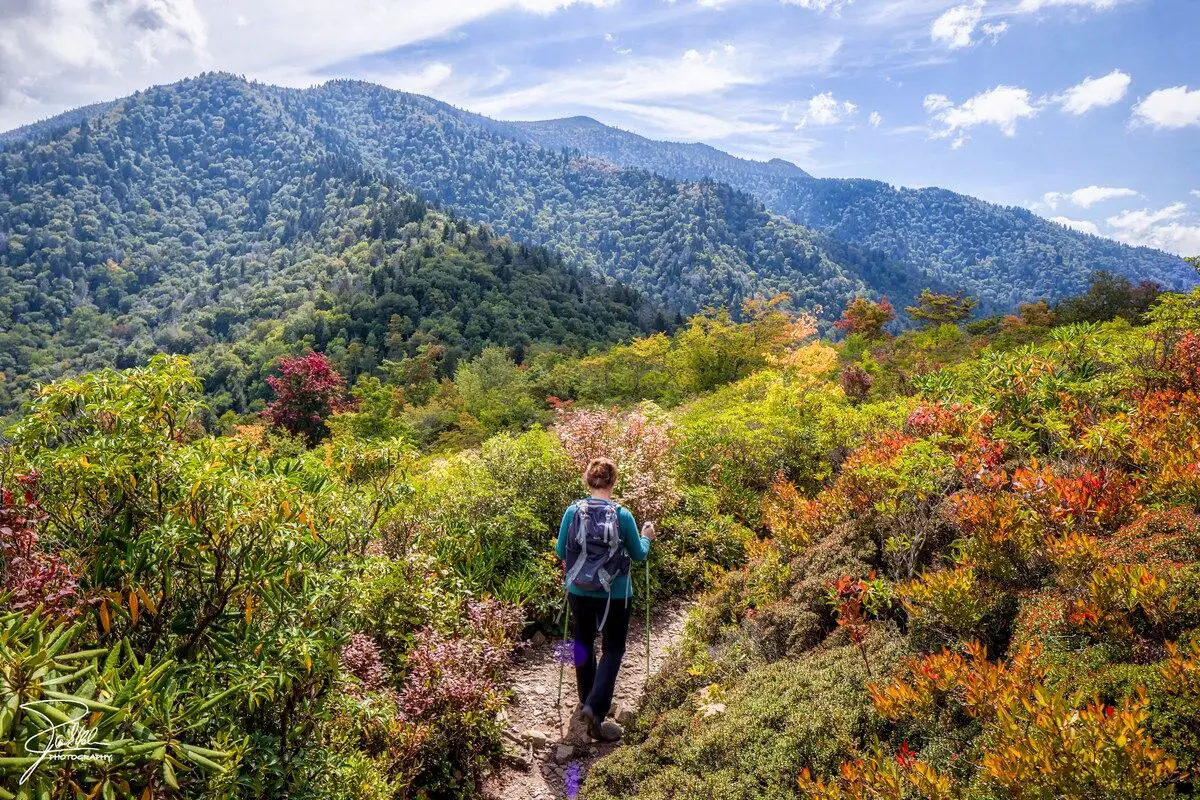 Things To Do In Smoky Mountain National Park – Hiking (Edited) Photo By Frank Kehren
Things To Do In Smoky Mountain National Park – Hiking (Edited) Photo By Frank Kehren
The Smoky Mountains are a popular destination for hikers throughout the year, with each season bringing its own unique benefits and hiking is one of the most popular things to do in Smoky Mountains National Park. In the winter, the absence of deciduous foliage reveals stone buildings, chimneys, foundations, and other remnants of former inhabitants.
A weekly display of trees and wildflowers can be seen in spring. Walkers can find cool retreats among the spruce-fir forests and other trees in the summer or they can follow splashy mountain streams to roaring falls and cascades. Autumn walkers can experience a variety of fall hues and the crisp, dry air that will hone their senses.
Here Are Some Popular Destination Hikes
Charlies Bunion
Alum Cave Bluffs
Andrews Bald
Rainbow Falls
Chimney Tops
Choosing a trail is one of the most difficult tasks that hikers must complete. Make a decision as to what you want to view first. Waterfalls? aged-growth trees? infinite views? Decide how far you want to hike after that. Be cautious if you haven’t trekked much recently. For beginners, a good maximum distance is five miles roundtrip.
Hiking with children? Kid-friendly hikes are an excellent way to learn and enjoy the outdoors.
Visiting Cades Cove
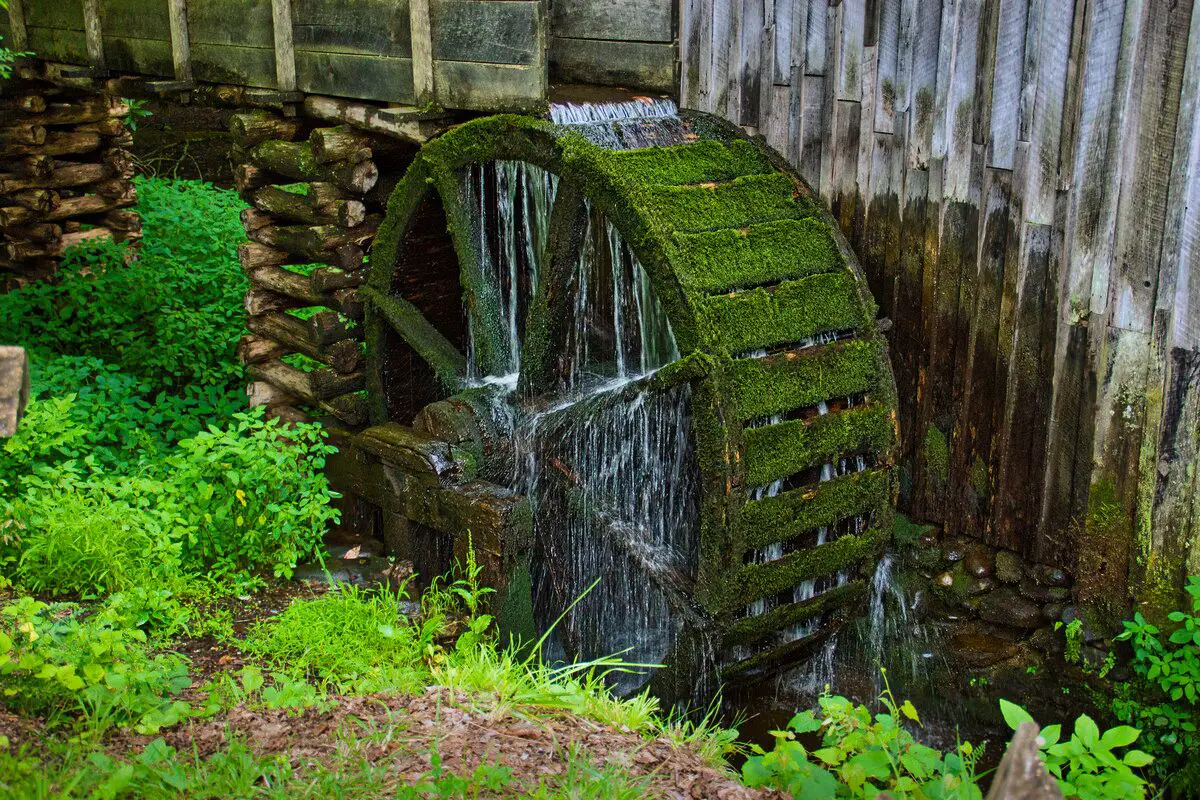 Things To Do In Smoky Mountain National Park – Visit Cades Cove (Edited) Photo Turcottes78
Things To Do In Smoky Mountain National Park – Visit Cades Cove (Edited) Photo Turcottes78
One of the more popular things to do in Smoky Mountains National Park is visiting Cades Cove One of the most visited places in the Great Smoky Mountains is the cove, a wide, lush valley surrounded by mountains. It provides some of the best chances to see wildlife in the park.
There are a lot of white-tailed deer around, and it’s also common to observe black bears, coyotes, ground hogs, turkeys, raccoons, skunks, and other creatures.
The Great Smoky Mountains National Park’s most visited location, Cades Cove, receives millions of tourists each year. This tranquil valley is traversed by an 11-mile circle road that creates a lovely refuge that people of all ages adore.
We want to answer any questions you may have about this beautiful region of the national park! Here is all the information you require about Cades Cove.
Where is Cades Cove?
Gatlinburg’s neighbor to the south is Cades Cove. Simply follow the Parkway through downtown Gatlinburg and the national park to reach the Loop Road. Right after passing the Sugarlands Visitor Center on your right, turn right onto Little River Road. After traveling about 25 miles on Little River Road, turn left at the fork to access the Cades Cove Loop Road.
Touring the Cove
Vehicle-free access along the Cades Cove Loop Road takes place each Wednesday, from May 4 through September 28, 2022. On these days, the 11-mile loop can be enjoyed on foot or bicycle.
An 11-mile, one-way loop road around the cove, allowing drivers to take their time and take in the scenery. Spend at least two to four hours seeing Cades Cove; if you choose to hike some of the nearby trails, allow more time.
Every weekend throughout the year, as well as during the summer and fall tourist seasons, traffic is congested. Please use pullouts when stopping to take in the views or see wildlife on the loop route to show courtesy to other visitors. Of all the things to do in Smoky Mountain National Park this is one of the most popular places.
Best Times to Visit During the Seasons
The peak season for Cades Cove is from April to November. Cades Cove is located in the Great Smoky Mountains. People plan vacations in Cades Cove during the summer months when school is out because of the wildflowers and fauna that emerge from hibernation in the spring. Due to the vibrant foliage in the fall, Cades Cove is perhaps most visited during this season.
Winter is the season with the least quantity of traffic, which starts to decline in December and continues through March. Discover more here about visiting Cades Cove at different times of year!
What are the Must-See Things in Cades Cove?
The John Oliver Place is located in Cades Cove, and as you travel the 11-mile loop, you’ll pass a variety of interesting historical structures, beautiful landscapes, and other attractions. You must make a short hike to the John Oliver Cabin, the first stop on the Loop. The three churches with cemeteries that you will afterwards encounter are well-liked locations to pause and stretch your legs.
The grist mill, the cantilever barn, and Carter Shields’ cabin are some further important stops. To learn more about the additional sights you can see, look at our detailed guide to the Loop Road’s stops!
Three churches, a functioning gristmill, barns, log homes, and numerous more meticulously preserved structures from the eighteenth and nineteenth centuries are dispersed along the circle route. For details on the residences you’ll see in the cove and the individuals who lived there, pick up the self-guiding tour booklet that is provided at the loop road’s entrance.
Waterfalls
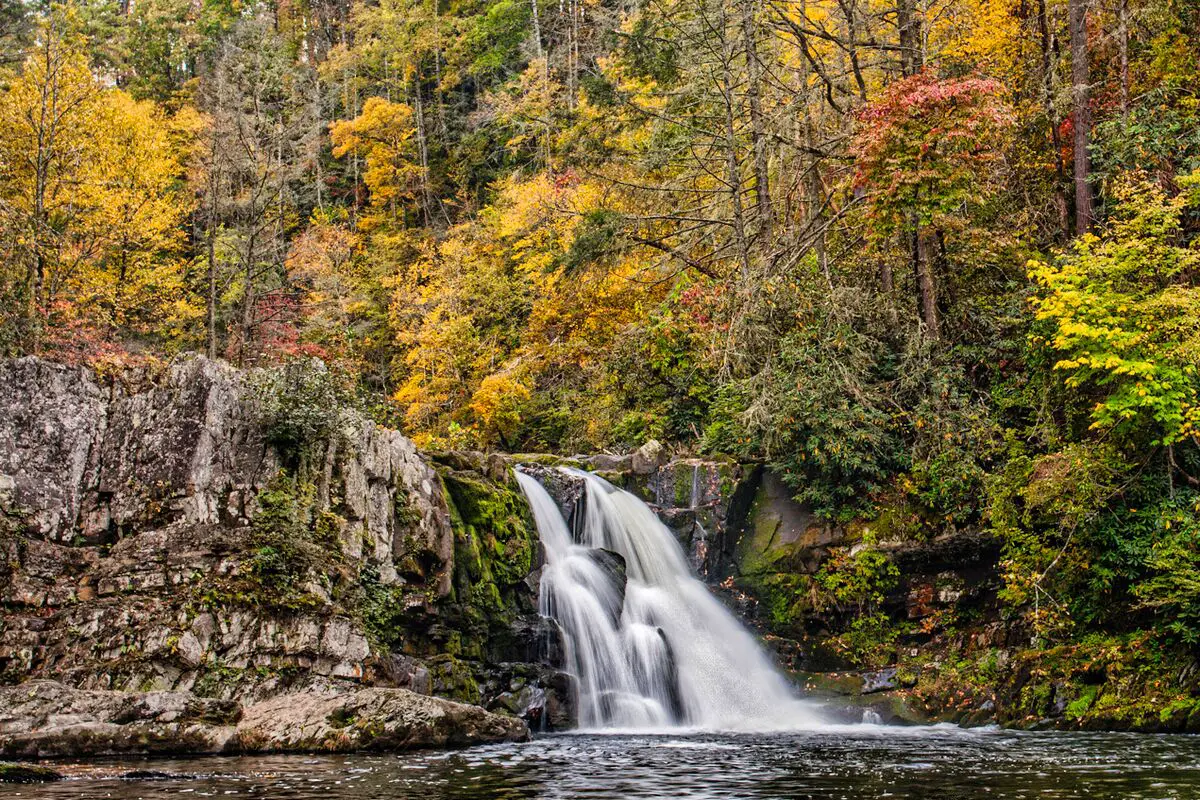 Things To Do In Smoky Mountain National Park – Visit the Waterfalls (Edited) Photo By Matthew Paulson
Things To Do In Smoky Mountain National Park – Visit the Waterfalls (Edited) Photo By Matthew Paulson
Every year over 200,000 visitors hike well-worn trails to view Grotto, Laurel, Abrams, Rainbow, and other popular waterfalls in the park. Large waterfalls attract the crowds, they are one of the most popular things to do in Smoky Mountain National Park, but smaller cascades and falls can be found on nearly every river and stream in the park and are less crowded.
The Great Smoky Mountains abound with the two ingredients essential for waterfalls-ample rainfall and an elevation gradient. In the Smokies high country, over 85″ of rain falls on average each year. During wet years, peaks like Mt. Le Conte and Clingmans Dome receive over eight feet of rain.
This abundant rainfall trickles and rushes down the mountain sides, from high elevation to low, sometimes dropping more than a mile in elevation from the high peaks to the foothills at the park’s boundary. Watch the brief video, Waterfalls in the Great Smoky Mountains National Park, for a overview of some of the park’s favorite waterfalls.
Historic Buildings
 Things To Do In Smoky Mountain National Park – Visit Historic Buildings (Edited) Photo By Mark Collins
Things To Do In Smoky Mountain National Park – Visit Historic Buildings (Edited) Photo By Mark Collins
One of the most popular things to do in Smoky Mountain National Park. Visit one of the best collections of log structures in the eastern United States. In the park, over 90 historic buildings, including homes, barns, sheds, churches, schools, and gristmills, have been preserved or restored.
The Roaring Fork Motor Nature Trail, Cataloochee, Oconaluftee, and Cades Cove are the greatest spots to watch them. To make your stay more enjoyable, self-guiding auto tour brochures are available at each location.
The National Register of Historic Places has recognized a few of the buildings you see above. These unique locations offer remarkable insight into how past communities functioned.
The sites that have undergone thorough state and federal examinations of their historical significance and are the subject of particular preservation efforts to keep them preserved for present and future interpretation are shown on the map below.
Burial Landscapes – Unusual But A Favorite “Things To Do In Smoky Mountain National Park”
 Things To Do In Smoky Mountain National Park – Visit the Historic Graveyards (Edited) Photo By James Jordan
Things To Do In Smoky Mountain National Park – Visit the Historic Graveyards (Edited) Photo By James Jordan
The historic cemeteries in the park serve as significant relics of the early landscape, tying the present-day Great Smoky Mountains National Park to a rich past and offering a singular activity to do in Smoky Mountain National Park.
Cemeteries are crucial components of the park’s overall history because they reveal valuable information about earlier burial practices, religious convictions, cultural and ethnic influences, community origins and evolution, and principles of landscape architecture. Cemeteries are frequently some of the last surviving physical reminders of a community’s past, even though almost all of its early artifacts may have been lost in the park.
Consider visiting one of the many cemeteries in Cades Cove on your next trip if you enjoy learning more about the history of the Great Smoky Mountains National Park. There are supposedly 14 cemeteries at Cades Cove, according to National Park Service records, although only 11 have been located.
Horse Riding, Hayrides and Carriage Rides
Horseback Rides
 Things To Do In Smoky Mountain National Park – Ride Horses or Go On A Hayride (Edited) Photo By Bart Heird
Things To Do In Smoky Mountain National Park – Ride Horses or Go On A Hayride (Edited) Photo By Bart Heird
About 550 miles of the park’s hiking trails are open to horses. Horses are restricted to trails specifically designated for horse use. If you wish to ride your own horse in the park, please obtain a copy of the park’s trail map. This map indicates the trails on which you may ride horses and explains the park’s rules and regulations concerning horse riding in the backcountry. It also provides information about backcountry camping, and permit requirements. To obtain an official trail map, stop at any park visitor center or call (865) 436-0120. The cost of the map is $1. You may also download a trail map.
Horses are allowed only on trails specifically designated for horse use. Off-trail or cross-country riding is prohibited. Horse riders may use designated campsites located on trails open to their use, however some backcountry campsites must be reserved in advance. These sites are indicated on the park’s trail map.
Drive-in horse camps provide ready access to backcountry horse trails in the park. Camps are located at Cades Cove (Anthony Creek), Big Creek, Cataloochee, and Round Bottom. Horse camps are open from April through October.
Hayrides
Ranger-led hayrides are also offered on some evenings on a first-come, first-served basis. See the Schedule of Events for scheduled these ranger-led Smoky Mountains National Park excursions.
Carriage and Wagon Rides
Carriage or wagon rides are offered at two of the concession horseback riding stables in the park. These rides provide an opportunity to experience a 20-30 minute horse-drawn carriage or wagon ride on a park trail. Please call the stable you are interested in for additional information.
Camping
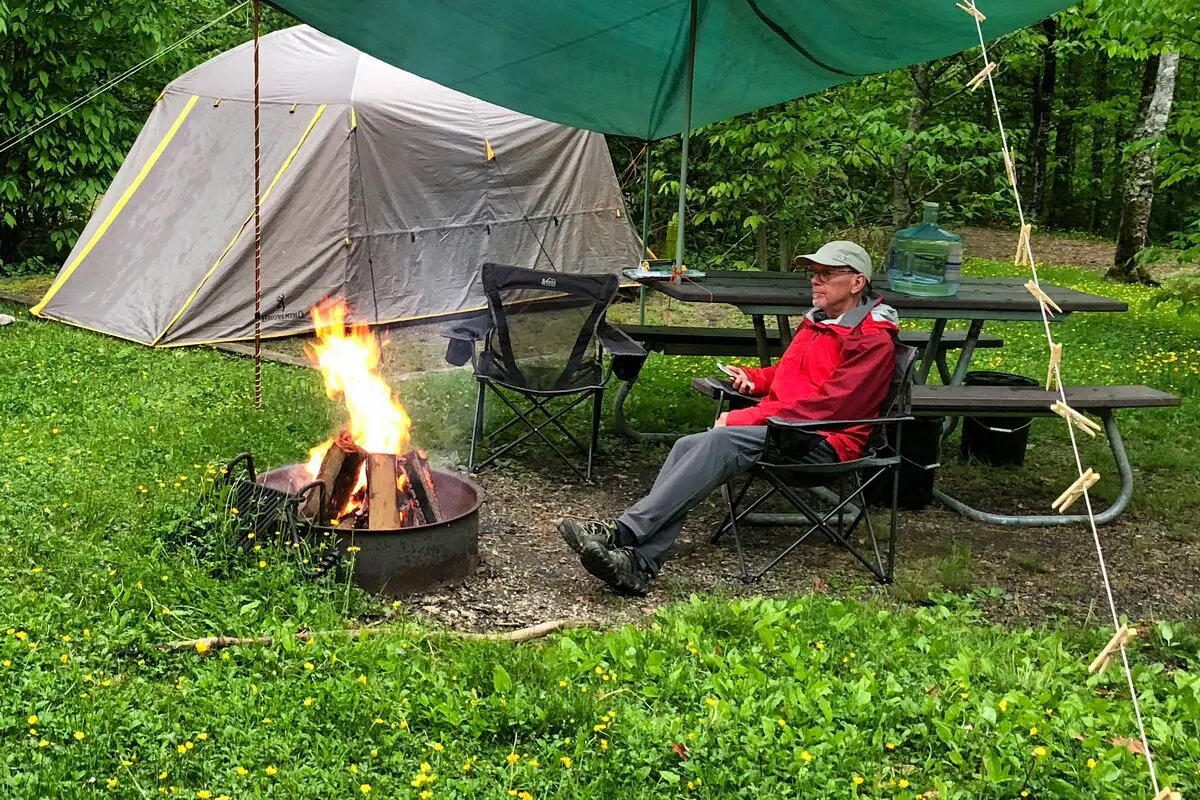 Things To Do In Smoky Mountain National Park – Go Camping (Edited) Photo By Susan Ruggles
Things To Do In Smoky Mountain National Park – Go Camping (Edited) Photo By Susan Ruggles
If you prefer being outside, you’ll enjoy spending time in the Park with its many things to do in Smoky Mountain National Park. For nature lovers, the national park offers a variety of outdoor activities, with camping being one of the most popular. During your upcoming trip to the Smokies, are you thinking about camping? The following list of Great Smoky Mountains National Park’s top 6 campgrounds includes:
Campers swarm to this campground to take in the lovely surroundings. However, what makes camping in the Great Smokies so special is the joyous sense of camaraderie. The busiest campgrounds are situated next to some of the park’s most picturesque natural features, including meadows filled with wildlife and creeks cascading over moss-covered rocks.
The distant campgrounds are peaceful havens where you can immediately immerse yourself in nature after parking your car. While wooden shelters are scattered along the Appalachian Trail (AT), which follows the mountainous spine of the park between Tennessee and North Carolina and passes Clingmans Dome, backcountry campsites cling to distant routes.
You May Want to Join Our Boondocking Group on Facebook For More Information
You May Want to Join Our Campfire Recipes Group on Facebook For More Information

